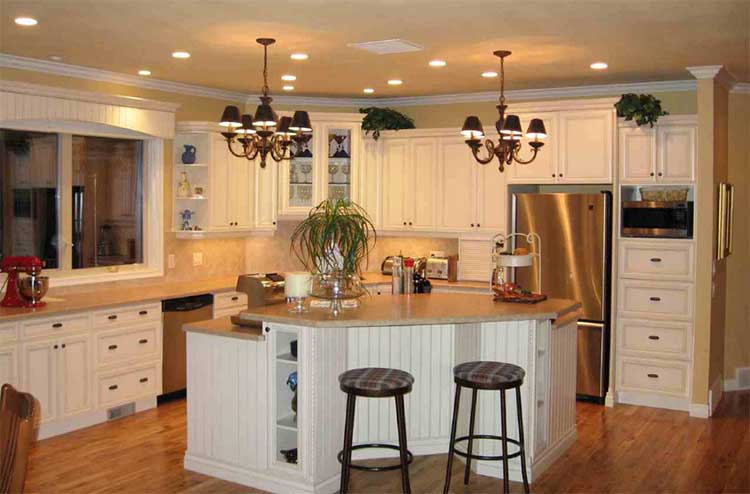
Kitchen remodeling illustration by homewallpaper.info
For many homeowners, the kitchen is one of the most prized areas of the home. It’s where food is prepared and often is the site of family dining. In homes that have a relatively small layout for the kitchen, homeowners often dream of making it bigger. There are several ways that a home remodeling contractor can help achieve this depending on how far you wish to take the renovation.
Recessed Cabinets

kitchen with recessed cabinets by gomodus.com
In an exceptionally small kitchen, recessed cabinets can make the room feel more open while providing a bit of breathing space. This is when the cupboards themselves are installed within the walls. While this makes the cabinets a near-permanent solution, it can give the sense of space depending on the thickness of the wall itself. To save space on the counter tops, you could also build in spice racks and shelving within the walls.
Absorbing Nearby Rooms
Some homeowners decide to absorb nearby space to make the kitchen larger. This is done by essentially moving a wall further into the adjacent space. In more extreme cases, a wall could be completely removed to give the kitchen a more open appearance. However, some walls may be load-bearing, and you should have an expert examine the structure before taking a sledge hammer to the surface.
Building Outward
If you have enough yard space, you could always add onto the kitchen by going outward. This will entail a bit more construction as you’ll need to extend the floor, ceiling and roof to compensate for the addition. However, you may be amazed by how much space you gain by adding a foot or two to the space. If building onto the home is something you would like, you could always build an entirely new kitchen and turn your current one into a dining room or some other household attraction such as a spa.
When you own a home, you don’t have to settle for the floor plan if you want something different. However, you should seek professional guidance before committing to any renovations. Removing the wrong beam or sawing through an unseen gas line could put you and the home at great risk.